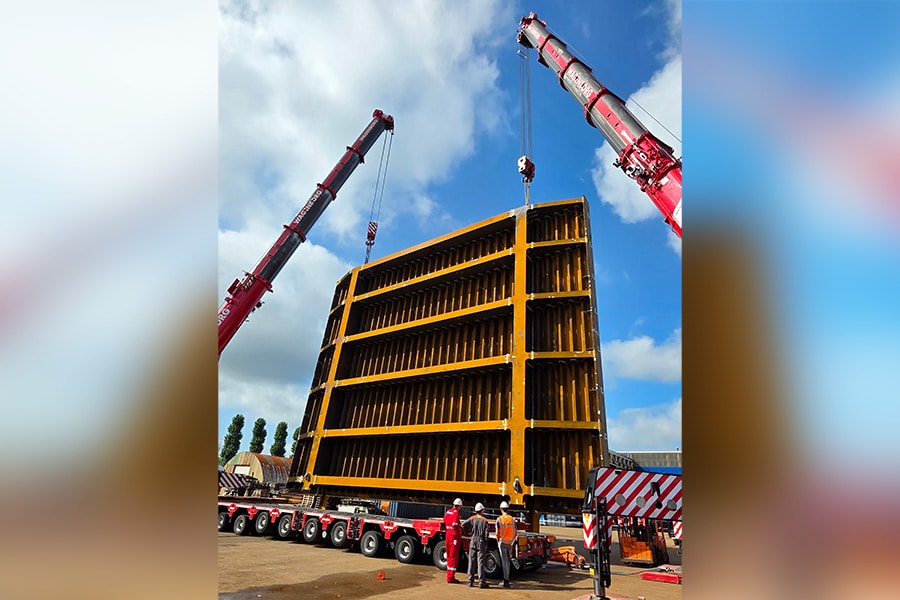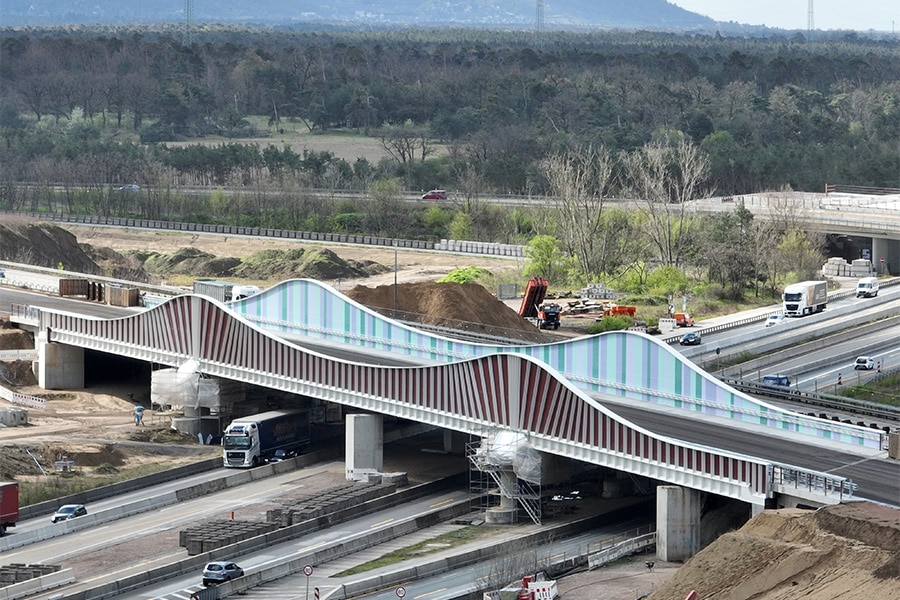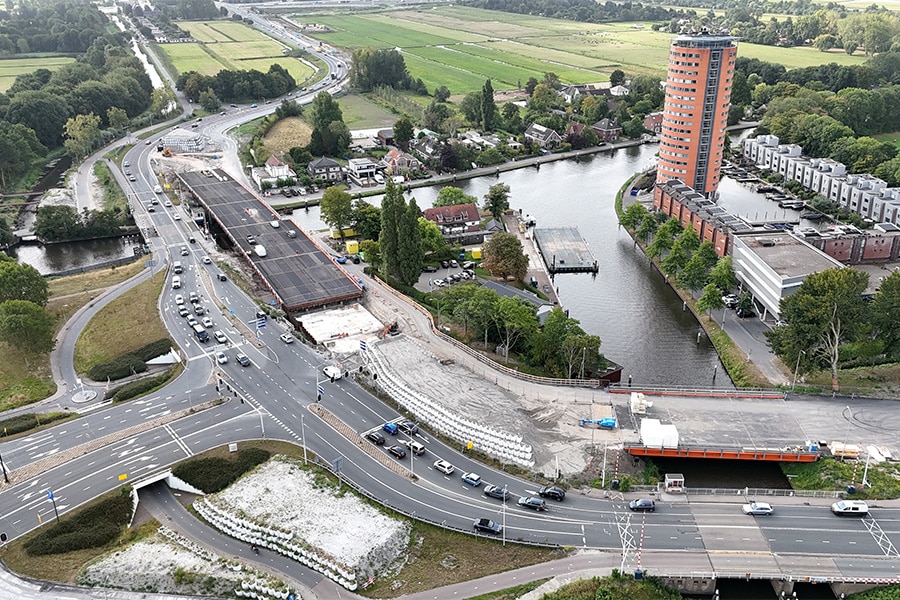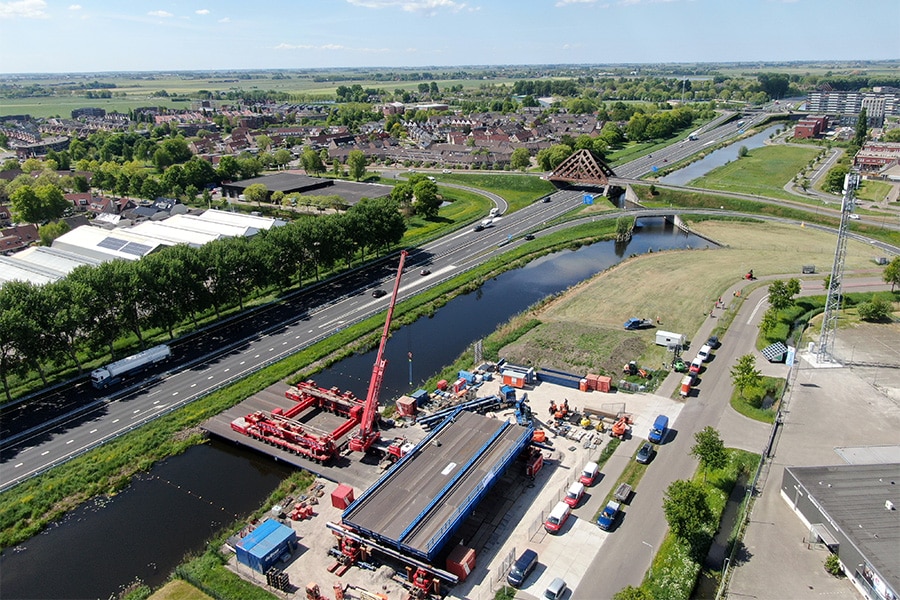
BIM, Digital Twin and digital environment applied to entire Program Approach Road Tunnels Amsterdam
TEC, a permanent partnership between leading international engineering consultants Royal HaskoningDHV and Witteveen+Bos, is supporting the design process and advising the municipality in future-proofing the tunnels in Amsterdam. Among other things by developing a BIM environment and a Digital Twin, they are doing this together with Infranea, specialist in 3D design, BIM services and VR simulations for complex infrastructural works.

Integral approach to the entire tunnel area
Within the program, work is integrated with various disciplines such as tunnel safety, fire safety, installations, operation, control and monitoring systems. The associated work will be carried out during the design, realization and commissioning phases. The BIM core team, consisting of Maarten Visser (TEC/Witteveen+Bos), Roy van Hattem (TEC/Royal HaskoningDHV) and Peter Schakel (Infranea) not only ensures optimal cooperation between all parties involved, but also that innovative, modern tools and techniques are implemented within all AWA projects.

Unified future-oriented road tunnel system and traffic control center
The goal of the AWA program is twofold: first, to achieve safe and available road tunnels that meet all requirements. Second, to make the tunnels future-proof. You achieve this by taking a generic approach and thus creating uniformity within individual projects. The result is that all tunnels will soon be ready for the future: safe to use easy to operate and easy to maintain.
In doing so, a generic approach will be used to create uniformity within the individual projects in terms of operation and monitoring. The result is a functional, uniform and future-oriented road tunnel system and traffic control center.

BIM and Digital Twin
Roy van Hattem, BIM advisor from TEC and Peter Schakel, Digital Twin expert from Infranea, explain that limited data from the past is digitally available from the existing tunnels. "It is therefore important that we first gather information about the existing assets and make a good plan of how we are going to approach these projects process-wise: first think, then do. Using the 3D tunnel scans, existing tunnels were mapped. The point cloud that comes out of a 3D tunnel scan as a product was used as a basis to create the 3D BIM models. This starting product was then used to add the design models. Now the Alliance (City of Amsterdam/Heijmans Infra/Siemens Mobility) of the Piet Hein Tunnel is further developing the models for the final and execution design. We are working together in one digital environment, the cooperation is going well and the models are being developed according to plan. BIM once started as a prerequisite for making a Digital Twin. For us, it is much more a matter of Building Information Management: the 3D model is used to link data and make design adjustments quickly. Everyone collaborates with their own input to optimize the BIM model, which is managed in one central location, always accurate and accessible to all parties in all phases. Especially in today's time with constraints that Corona brings, this is crucial."

Digitization of great added value
As BIM manager, Maarten Visser manages the entire integrated approach within the program in which several teams within various disciplines are working. "In the program we have several modeling teams led by a BIM coordinator per project. In addition, there are several teams working on the development of the Digital Twin. The BIM model serves as the basis for the Digital Twin. Together, they have three main goals. First, design verification and validation, to see if we have designed it correctly and correctly. Secondly, testing and proofing; by deploying a Digital Twin, a lot of testing can already be done in the digital process with which we realize the shortest possible tunnel closure. And third: supporting Training, Education and Exercise (RTD). The software and hardware systems must work together to ensure a safe situation. Based on the tunnel's Digital Twin, we offer the most realistic exercise and training environment possible."

Digital environment
Part of the Digital Twin is the virtual CCTV camera validation tool. This is where the camera plan of the Piet Hein tunnel, created by the Alliance, is loaded. "This gives you a perfect insight into the sightlines and whether the cameras are hanging in the right places to survey the entire tunnel," explains Peter Schakel. "Also with the Virtual Reality (VR) glasses on you can experience this completely." As mentioned, the digital environment is also used for education, training and practice. Within the program, Rik Teuben is the test manager. He knows: testing does not take time, solving findings takes time. Because TEC and Infranea facilitate software-based digital testing, you pull that forward in the process, you can already solve findings and save costs and time, shortening the lead time and preventing risks.
"It's great to see how we can do this these days," says Maarten Visser. "The traffic controller sits at his own workstation behind the operating desk and sees an image from the digital environment instead of a camera image." Peter Schakel adds: "The trainer can put all kinds of scenarios into the simulation and thus practice procedures and protocols. The actions of the traffic controller also translate into the behavior of the tunnel system in the digital environment. The trainer can make ad hoc changes to the scenario and check how the traffic controller acts and deals with the feedback. Because it is so realistic, people are better trained and are found to be demonstrably competent." This makes the Digital Twin an integral part of the Education, Training & Exercise program, drawn up by Marcel van Wijk, OTO program project leader.
Management and maintenance
"Applying a Digital Twin of a tunnel has not been done before within the municipality of Amsterdam. Of course there's a lot of coordination involved on the front end," says Maarten Visser. "It's a big step. Digitalization is not intuitive for everyone," Peter Schakel adds and continues: "This is where TEC together with Infranea plays an important role in keeping it low-threshold and creating a foundation in this." Roy van Hattem: "The investment in all these digital techniques aims to minimize and control impact and disruption before, during and after the renovation of the tunnel, reduce failure costs and shorten the tunnel closure. In addition, ensuring safety, securing knowledge, educating and training skilled people and transferring them to management and maintenance are parts of this approach. The Digital Twin will soon be able to support the tunnel manager and its contractors, both in emergencies and during regular maintenance. The uniformity and reusability of the processes in the Piet Hein tunnel, form the basis for the other tunnels. This is a good frame of reference for the municipality. Because you learn from this, you can improve there and that is pure profit." He concludes, "This is no longer the future, this is what we are doing now!"




